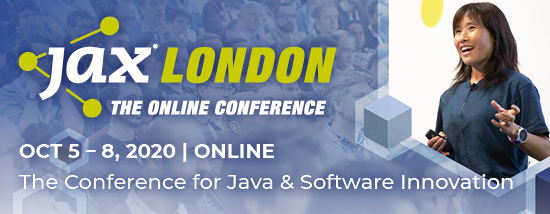On April 6, 2021, Microsoft announced the preview of the Microsoft Build of OpenJDK, a new open source Long-Term Support (LTS) distribution of OpenJDK. We asked Bruno Borges, Principal Product Manager for Java at Microsoft some questions about the new release.
JAXenter: Java has a huge developer ecosystem. What does the introduction of the Microsoft Build of OpenJDK mean for Java developers?
Bruno Borges: One of the greatest things about the Java ecosystem is the diversity of people and technology. There are several options available for Java developers, from frameworks to IDEs, and different builds of OpenJDK from different companies — the Microsoft Build of OpenJDK becomes another option to choose from.
For Java developers who interact with Microsoft services and products, we hope that our Build of OpenJDK becomes their JDK of choice, so that we can better support them, while we also contribute to the OpenJDK project and participate in the Java ecosystem.
SEE ALSO: What Java Programmers Should Learn in 2021
JAXenter: The Microsoft Build of OpenJDK includes binaries for Java 11. There are still many developers and products using Java 8. What benefits will they experience when moving to Java 11?
Bruno Borges: We recommend developers to move to Java 11 and later versions so they can benefit from several enhancements that can be translated into cost savings in cloud deployments and accelerated developer productivity.
Since Java 8, new features have been added and enhancements have been made. There are noticeable additions and modifications to the API, and there are enhancements that improve startup, performance, and memory usage.
We believe the process is worth the effort, and with good guidance, this transition can be more easily done. We published a couple of articles on this topic:
JAXenter: This build may contain some fixes and enhancements. Can you share more information about this?
Bruno Borges: Yes, absolutely. Right now, this Preview is based on OpenJDK 11.0.10, with a particular patch that we developed and contributed to OpenJDK tip (in the source code). This change is being used internally at Microsoft, and that is why we backported to our binary, and pushed the backport to OpenJDK 11 branch, awaiting to be merged.
JAXenter: Why should a developer use this build of OpenJDK over another?
Bruno Borges: We are working towards making the Microsoft Build of OpenJDK the default JDK for Java 11 across Azure managed services. We would love to see developers who are working with Azure services and deploying to Azure to use our Build of OpenJDK to test and provide feedback.
For all other Azure services, customers can bring their JDK of choice, including the Microsoft Build of OpenJDK.
JAXenter: The future of Java looks exciting. What upcoming new features are you looking forward to?
Bruno Borges: The OpenJDK project has some interesting and exciting projects in progress right now, being led by Oracle. We are certainly looking forward to seeing Project Loom come to life. This can provide substantial benefits for Cloud Computing workloads based on Java.
JAXenter: How does Microsoft use Java internally? Why is it important for Microsoft to contribute to the Java ecosystem?
Bruno Borges: Something that few people realize is that Microsoft uses Java a lot. There are more than 500,000 JVMs running internally at Microsoft just for our own needs, powering services like LinkedIn, Minecraft, Yammer, and a series of Big Data related solutions.
We also have a substantial number of Java workloads from our Azure customers. Being part of the Java ecosystem is critical for us, and we want to collaborate with and contribute to the Java community the best way we can. The success of the Java ecosystem is important to our customers, and it is important to us.
Thank you so much for the interview!
The post “One of the greatest things about the Java ecosystem is the diversity of people and technology” appeared first on JAXenter.
Source : JAXenter



















